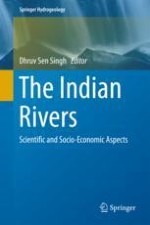2018 | OriginalPaper | Buchkapitel
The Mahi: An Important West Flowing River of Central India
verfasst von : Anupam Sharma, Kamlesh Kumar
Erschienen in: The Indian Rivers
Verlag: Springer Singapore
Aktivieren Sie unsere intelligente Suche, um passende Fachinhalte oder Patente zu finden.
Wählen Sie Textabschnitte aus um mit Künstlicher Intelligenz passenden Patente zu finden. powered by
Markieren Sie Textabschnitte, um KI-gestützt weitere passende Inhalte zu finden. powered by
